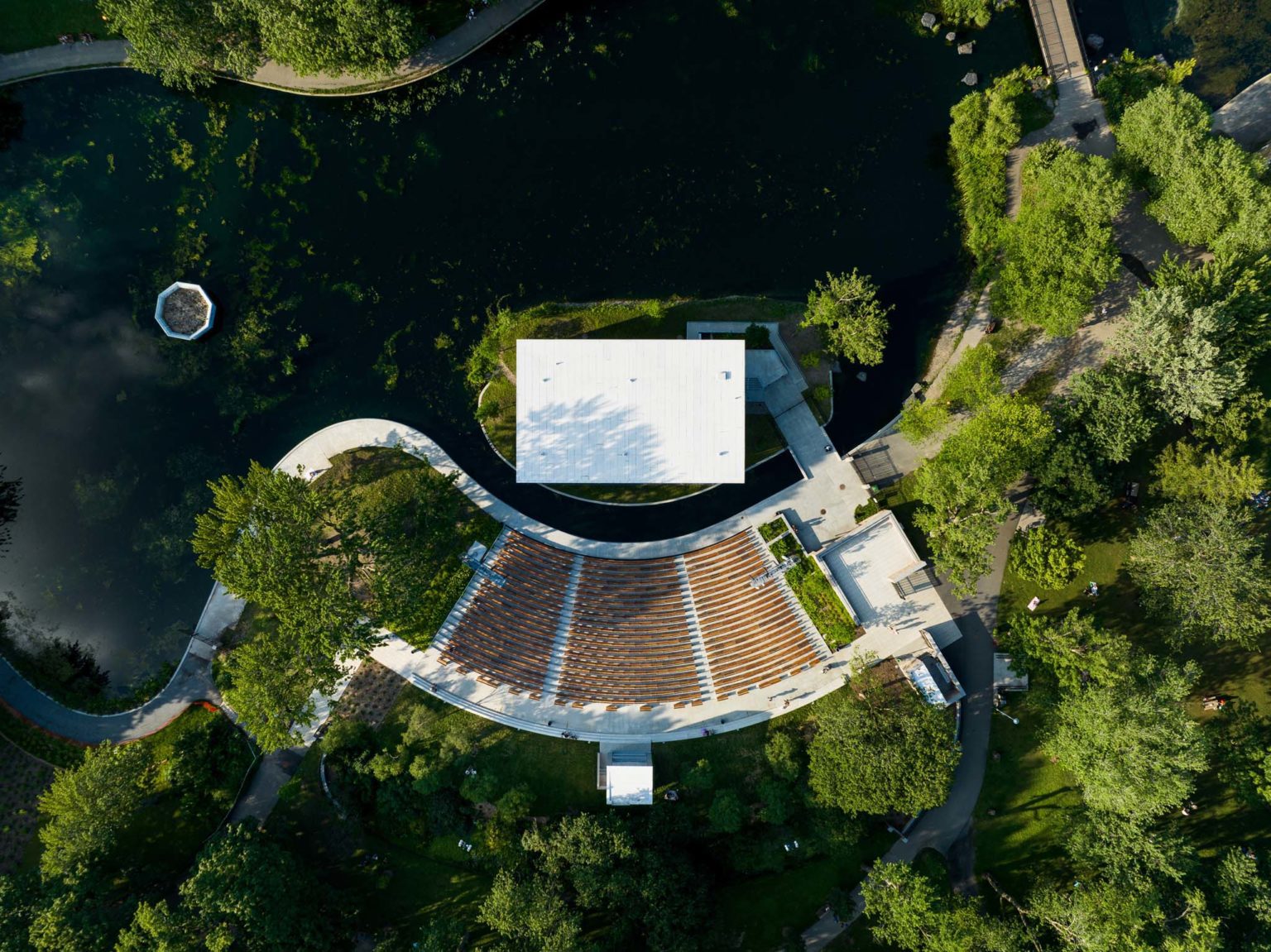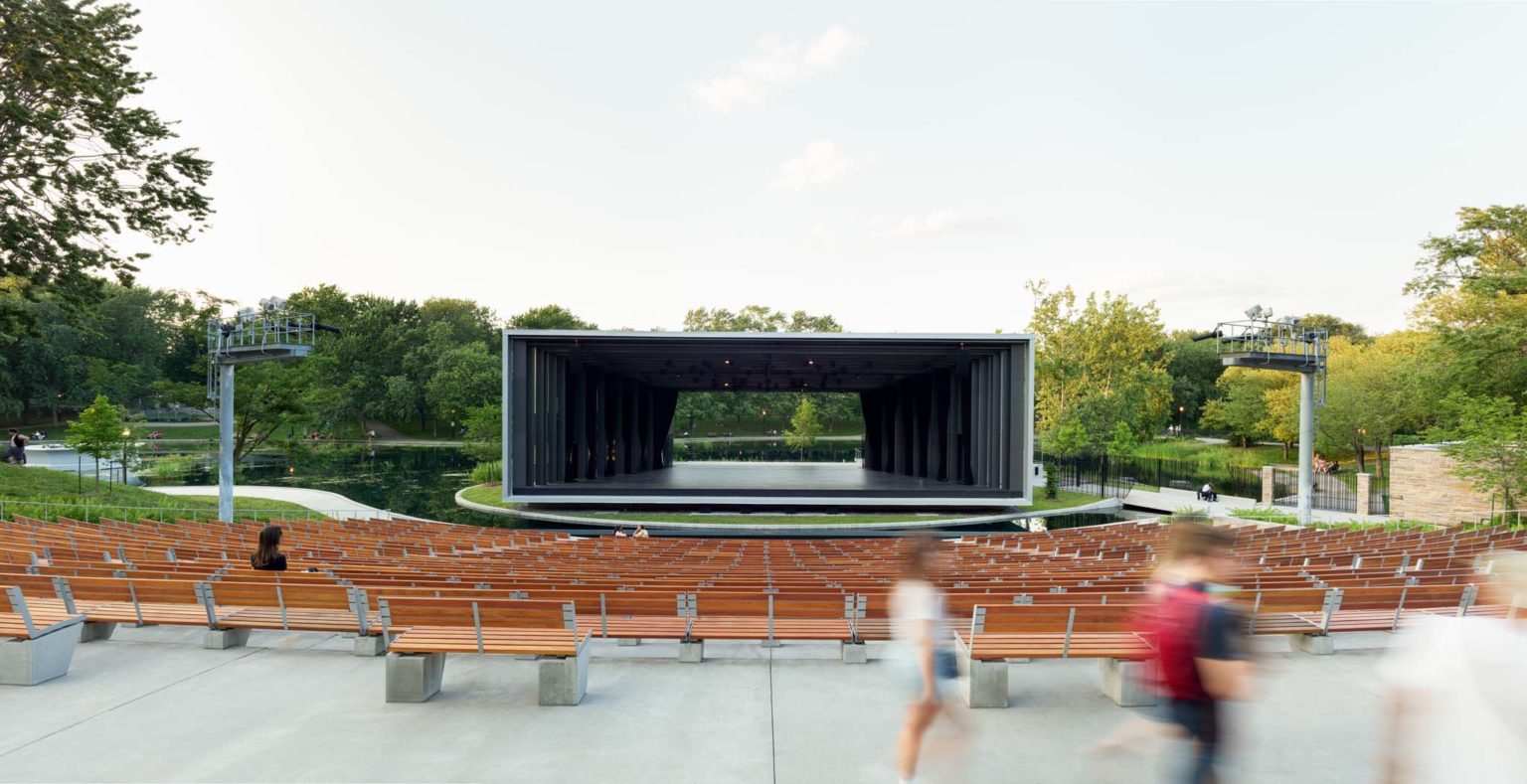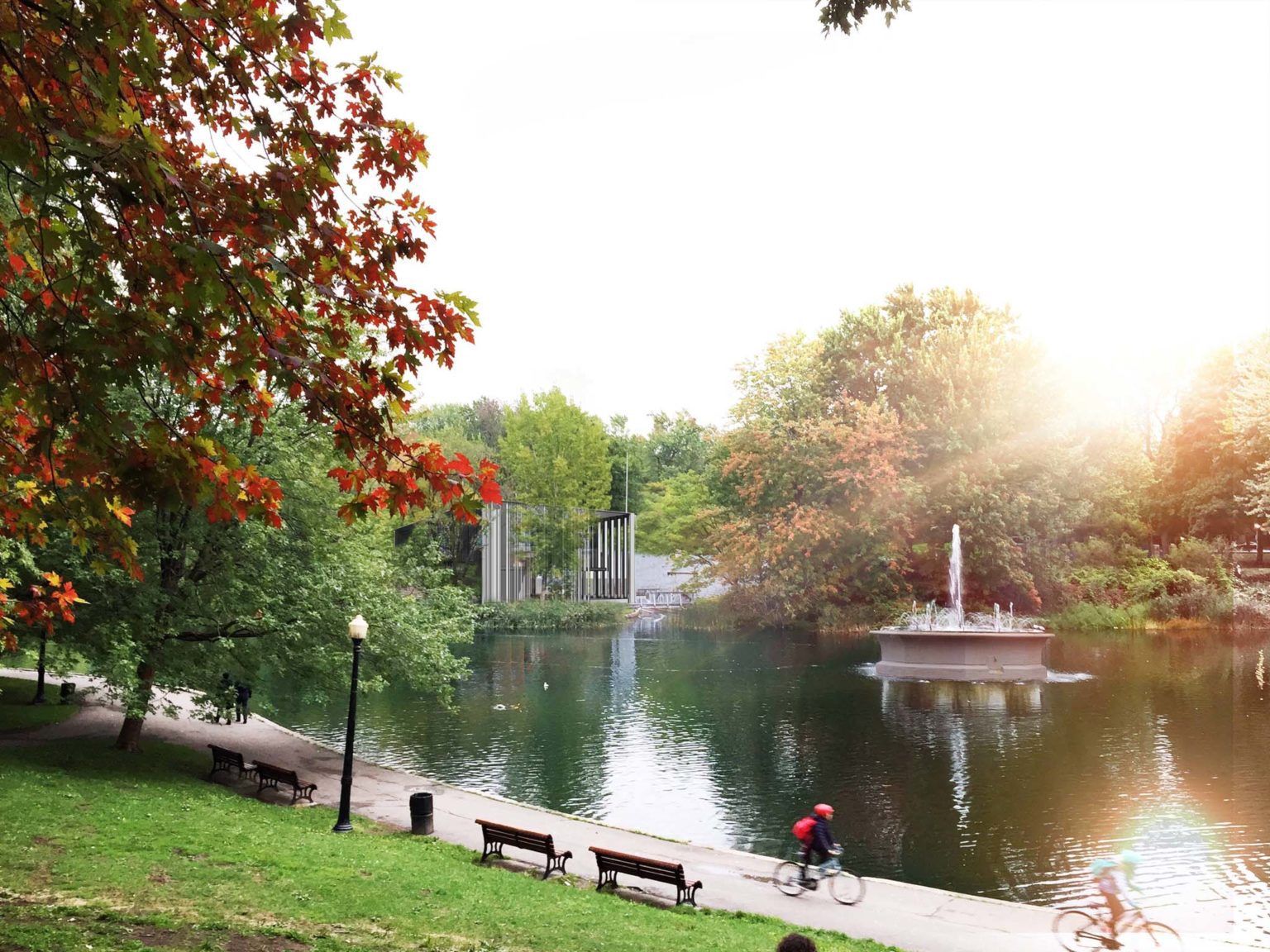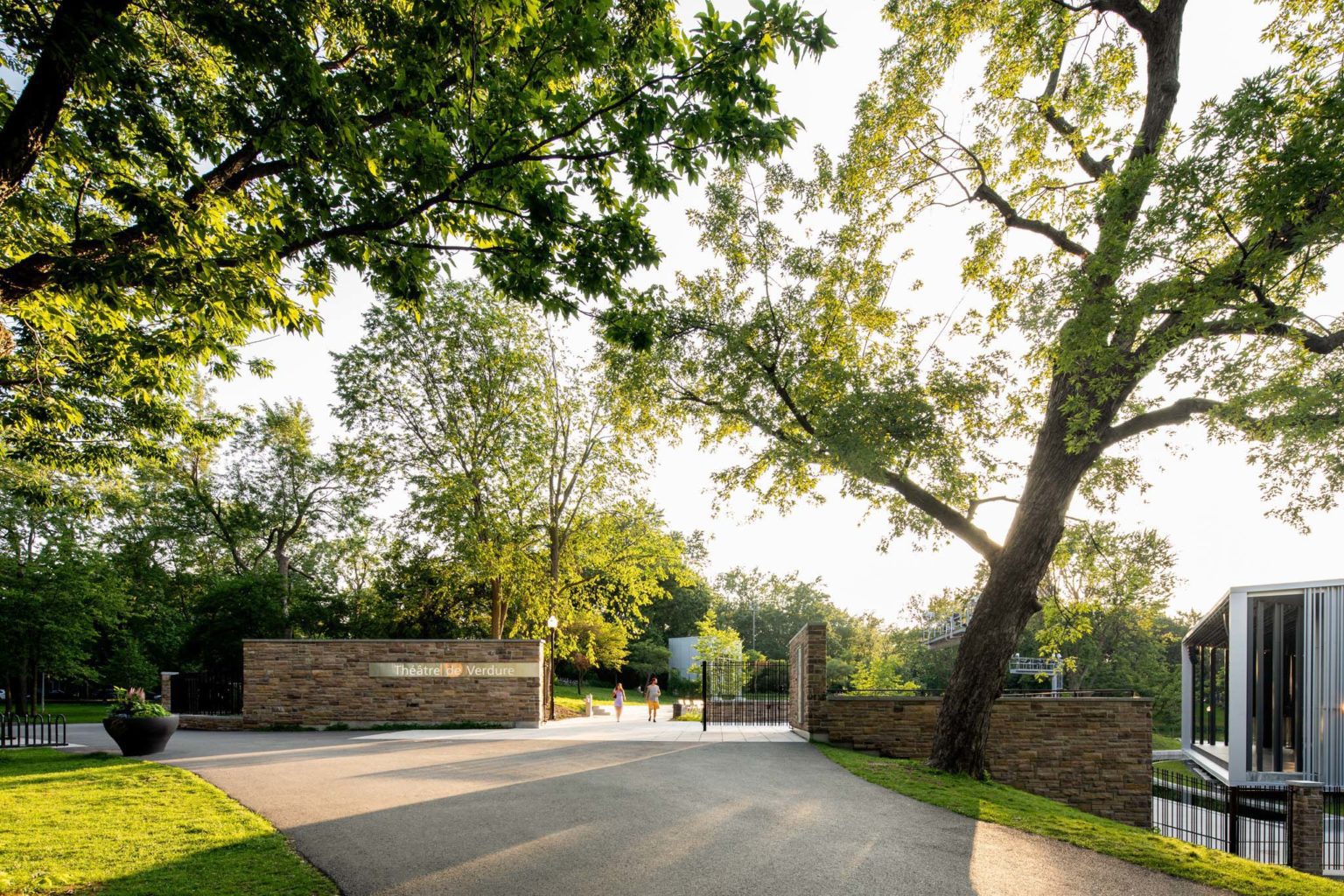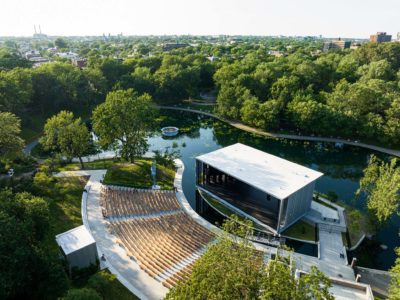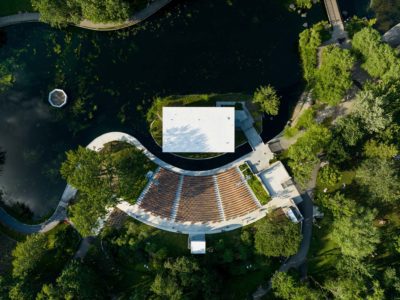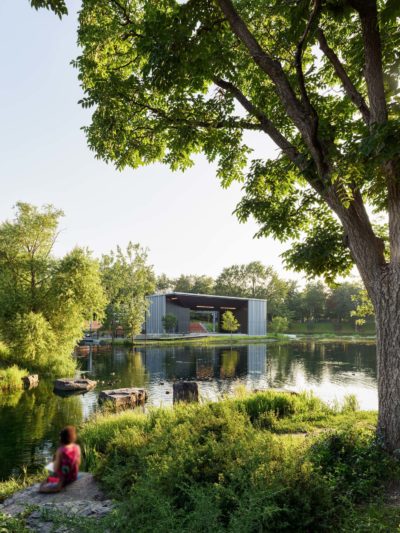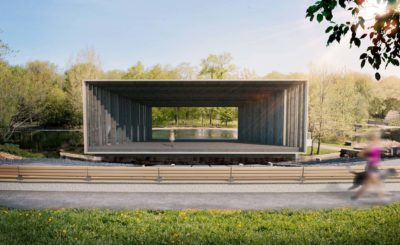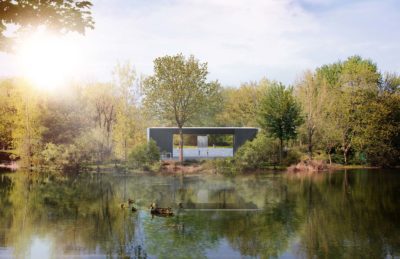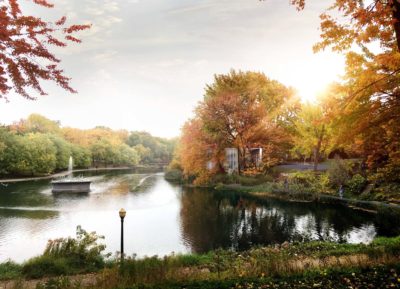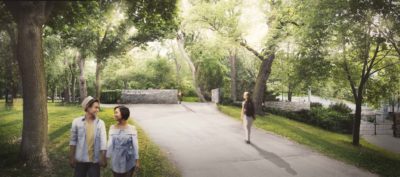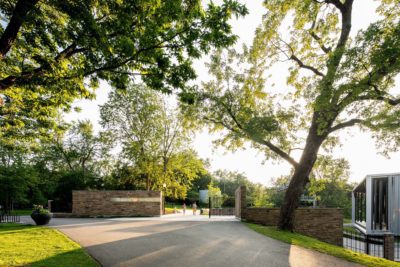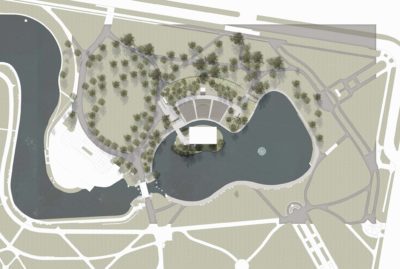Project Credits & Specs
- Architects: Lemay
- Images: Lemay, Adrien Williams
- Location: Montreal, Canada
- Year: 2022

Project Description
A stunning redesign by Lemay of Montreal’s Théâtre de Verdure was initially inaugurated in 1956. The theatre has now been enhanced with a new 4-season concept that redefines the relationship between theatre and park, architecture and landscape, and the built and the natural. Guided by an inclusive and pluralistic vision that broadens the theatre’s mission and reaffirms its heritage identity, this public space has been made more open and accessible than ever for lovers of arts and culture.
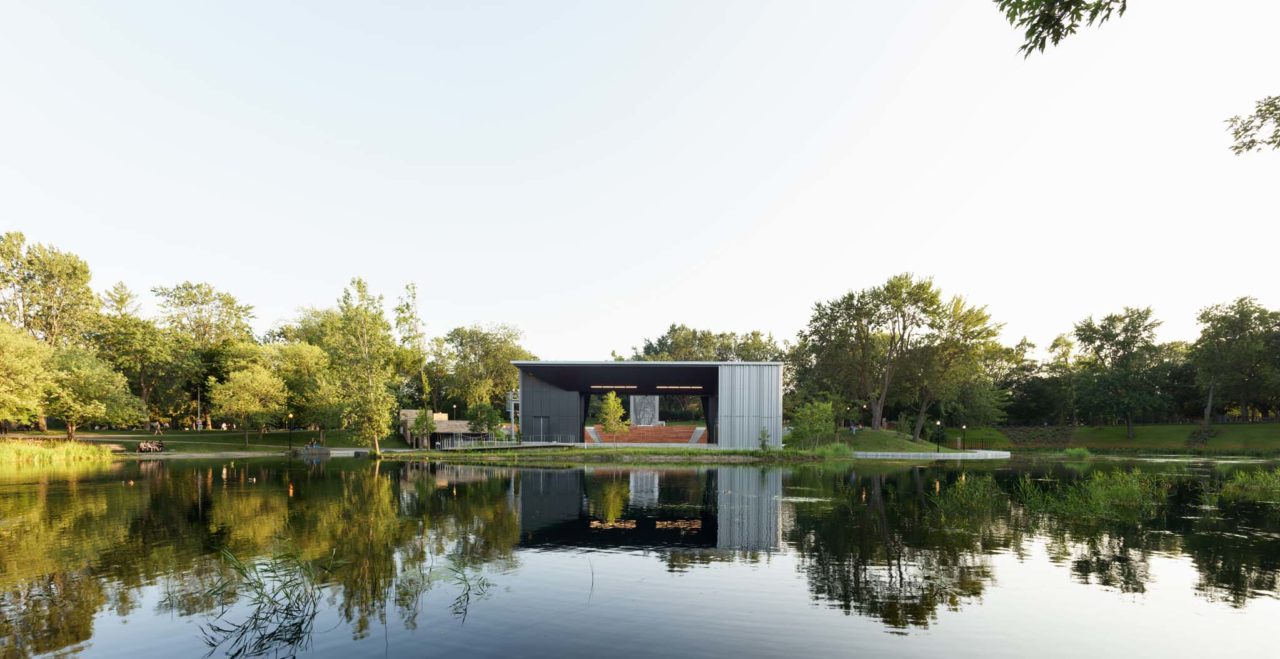
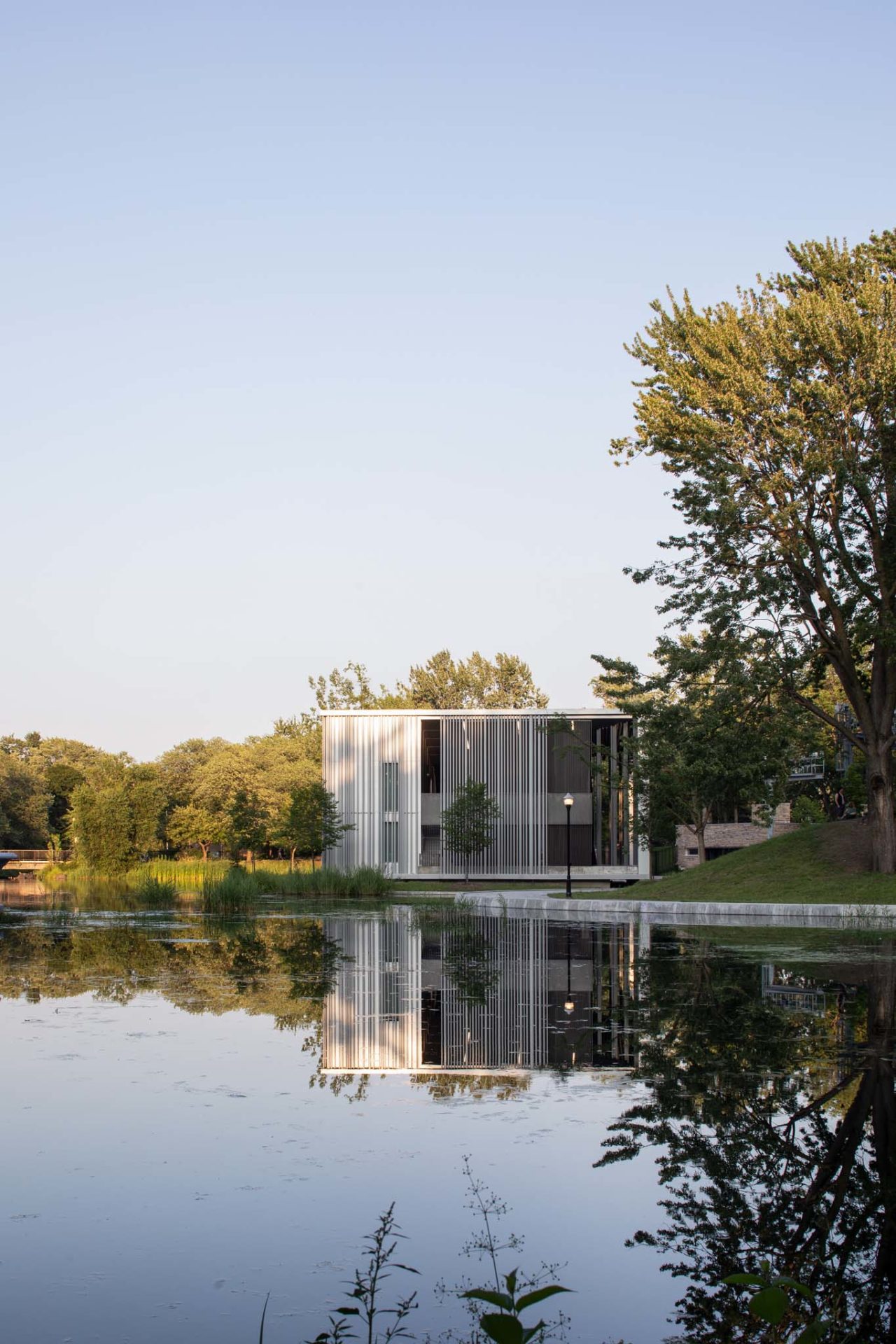

Framing the landscape of La Fontaine Park by opening onto it, the architecture of the Théâtre de Verdure maximizes views of both the stage and the surrounding green space. Lemay’s new design makes its presence felt from the banks of the water basin all the way into the interior of the park, with different uses arranged in a way that promotes a timeless presence.


Designed to contribute to the experience of visitors and passers-by, the architecture invites discovery, both inside and outside the site. The result is a new green, modern, and lively public space that offers a vibrant place for lovers of arts and culture to witness unforgettable moments.
“Intervening on the Théâtre de Verdure was an incredible opportunity to offer visitors an architectural, landscape, and artistic experience. In an approach where the limits between the two became blurred, the project developed as a vast scenography of the landscape through architecture,” explains Eric Pelletier, Senior Partner at Lemay and Lead Designer on the project.
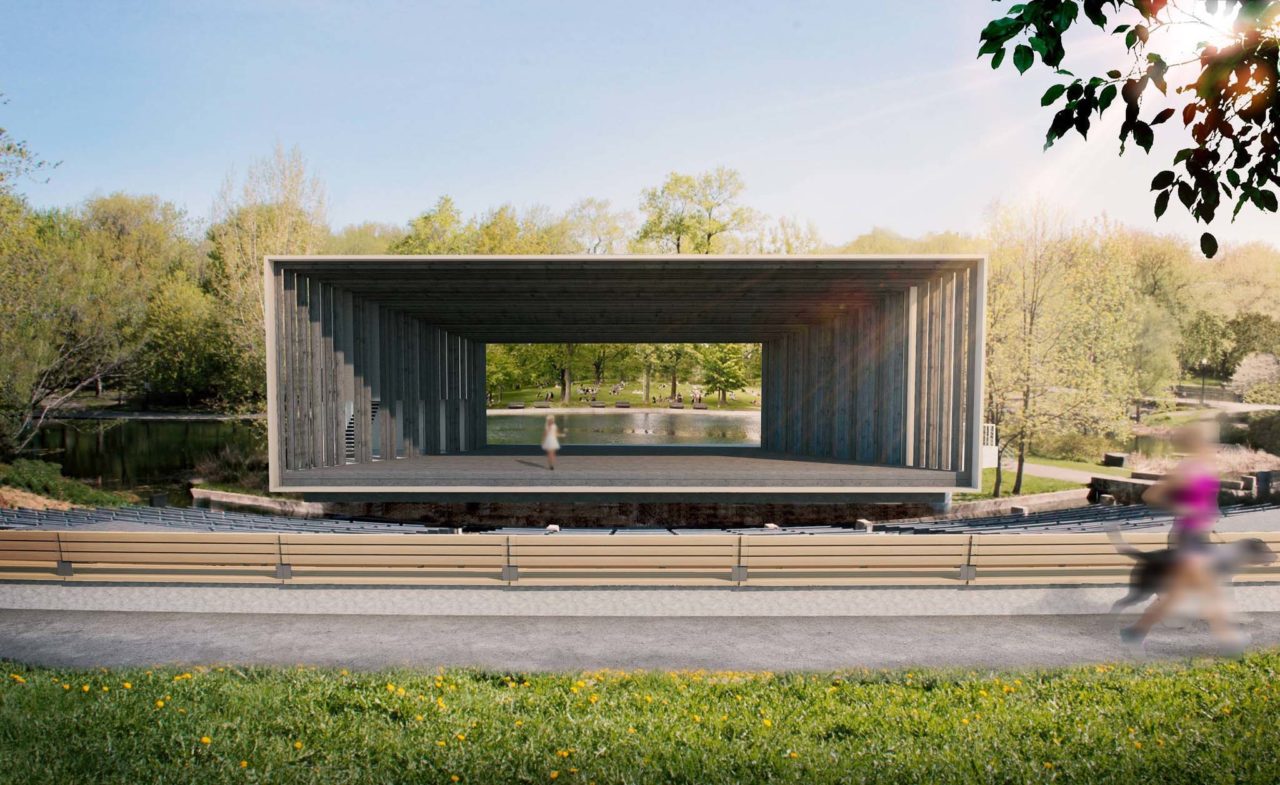
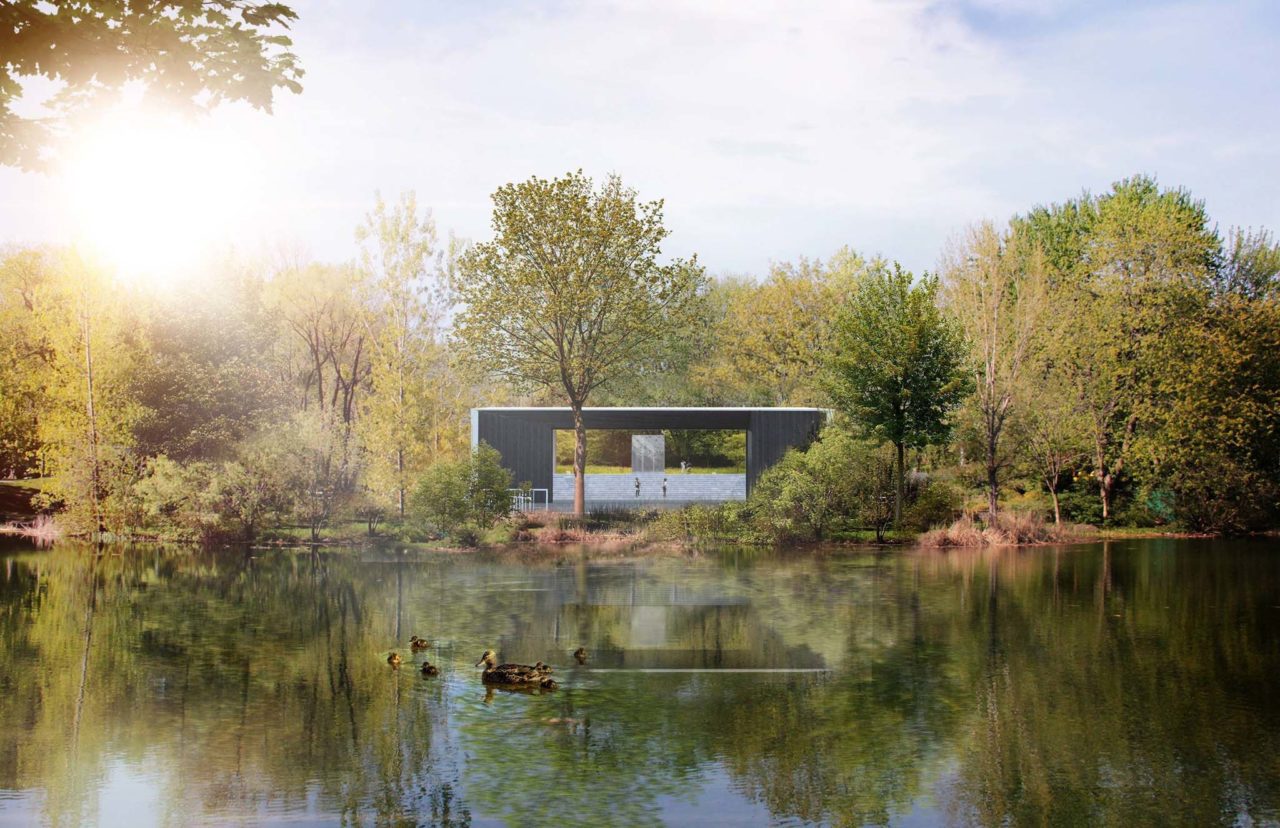
The site’s reanimation goes beyond the notion of a standalone stage and creates a new theatrical destination integrated with nature, allowing everyone to rediscover not only the Théâtre de Verdure but also its park and its basin. Complete with a first-rate stage infrastructure, the venue is ready to host major outdoor artistic productions, comfortably accommodating crowds of up to 2,500 spectators who can watch from the space’s seats or dedicated greenspace while being carried away by the spellbinding scenery and what is happening on stage.



“Throughout the project, we were keen to reaffirm the theatre’s heritage identity, and we took care to develop new interventions compatible with the memory of the site,” explains Marie-Ève Parent, Associate and Discipline Director in Landscape Architecture at Lemay.
In order to make the site accessible at all times, even outside of performances, Lemay created new entrances and extended the pedestrian path around the basin. By planting a low vegetative cover and preserving the canopy, new perspectives that open up both on the theatre and on the surrounding park have been created, making the theatre pop within the site, rather than shield it from view.
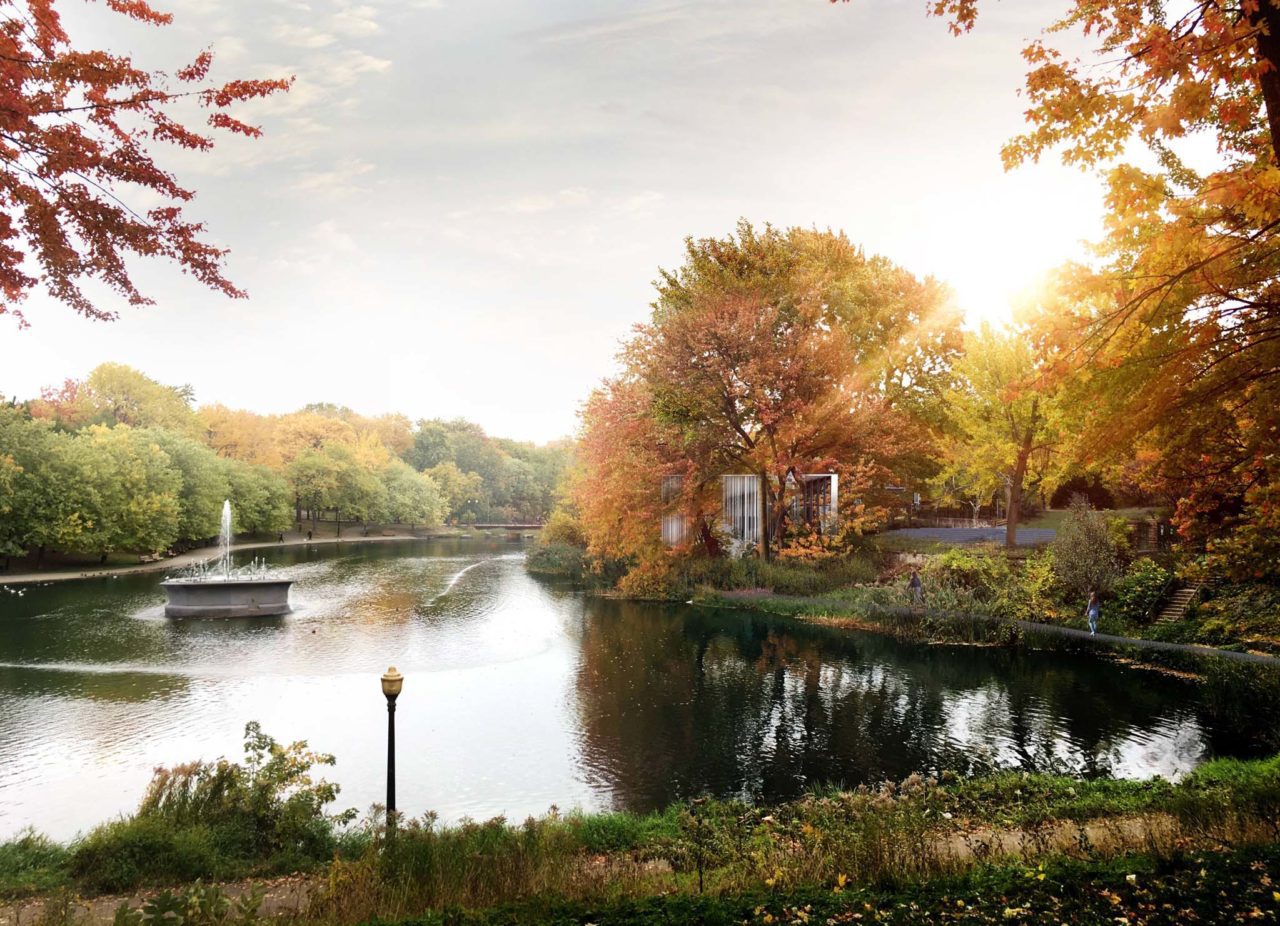
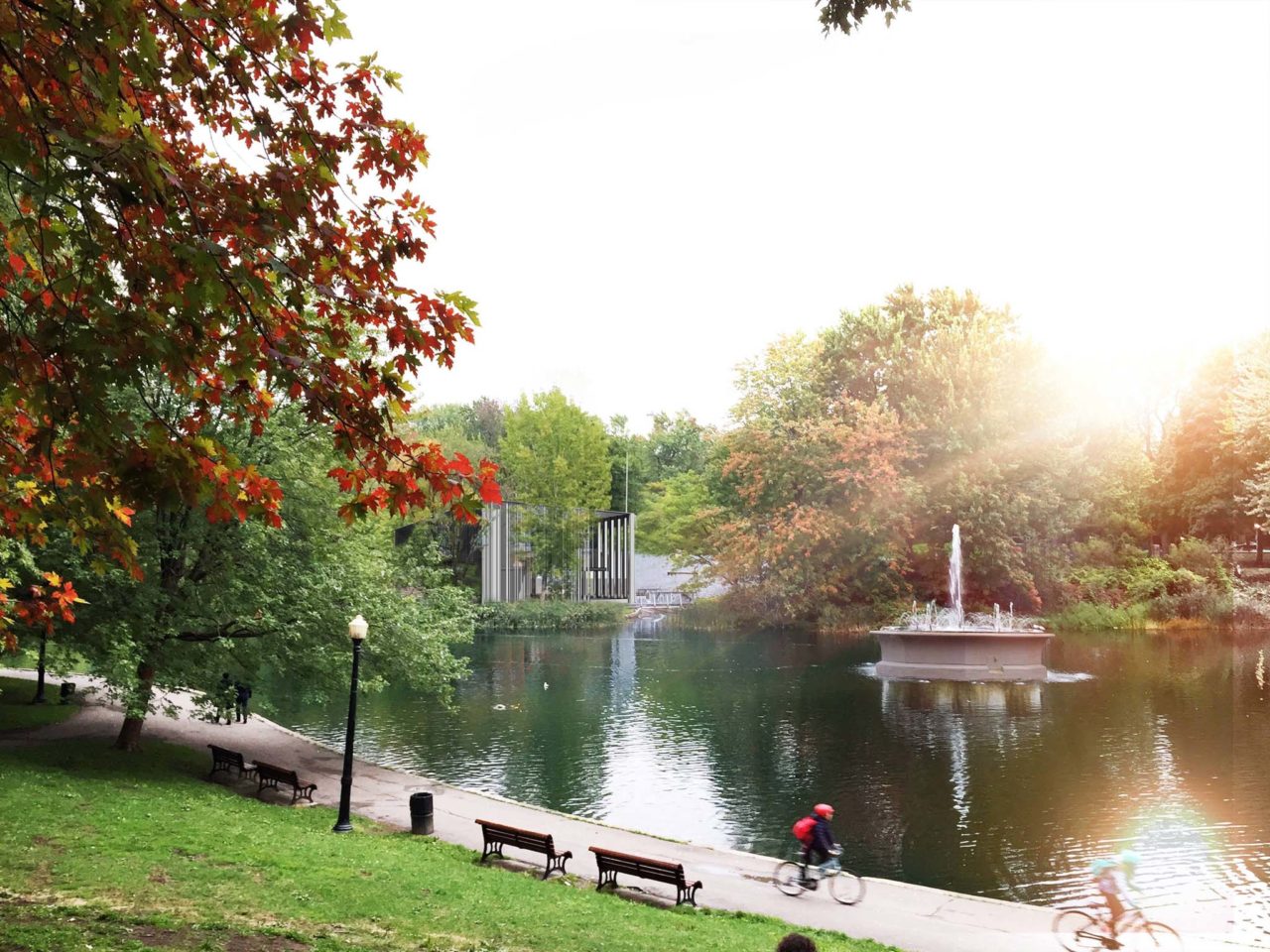
Lemay applied the sustainable strategies of its NET POSITIVE™ framework to minimize the project’s impact on the environment. Designers made practically all spaces open to the outside; even the green room, which is a balcony that projects onto the pond surrounding the theatre. Interventions were kept to a minimum on the site to increase the area’s vegetative cover and augment the theatre’s integration into the landscape. Locally available materials were preferred, such as Douglas fir, which is native to Canada, over ipe, a Brazilian wood species that is often used in similar structures.
This emblematic site is a well-known hub of arts and culture, hosting thousands of free shows over the years. As of this year, artists of all stripes are taking to its stage once again with a celebratory calendar of free performances ranging from works of dance and sweeping orchestral performances to theatre shows and circus feats.
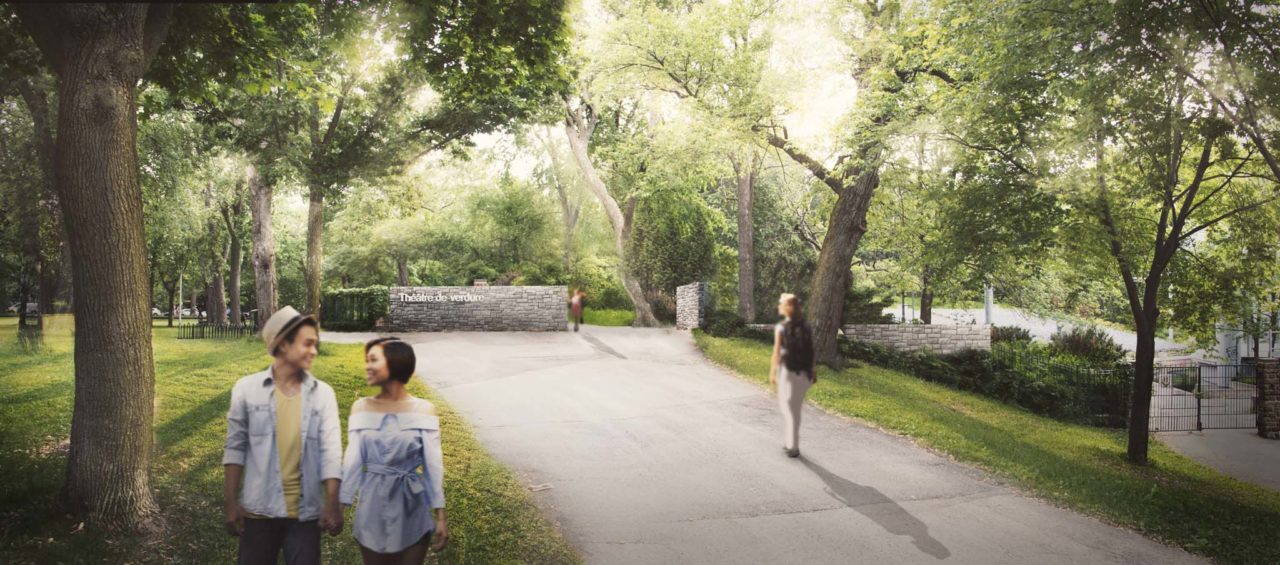

The project description is provided by the architects, via v2com.
About the Architects

Lemay has been imagining new ways to create spaces that engage users and bring people together since 1957. Over 400 architects, designers, industry leaders, and change-makers work tirelessly to cultivate innovation in their own backyards, and in communities around the world. Inspired and strengthened by transdisciplinary creativity, the firm has also developed its very own NET POSITIVETM approach to guide teams toward sustainable solutions that shape a better future. With the human experience at its heart, Lemay strives to design with empathy and create spaces to grow.

